
|
 |

|
 |
JAAN R FREEMAN Aug 2001 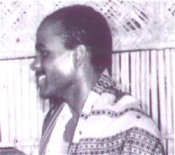 Jaan R Freeman dancer, choreographer and teacher, born and raised in New York city, USA, has trained at the Martha Graham School of Contemporary Dance, Mary Anthony Center, New York State School of the Arts and Summer Arts Institute of Lehman College. 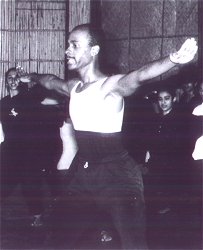
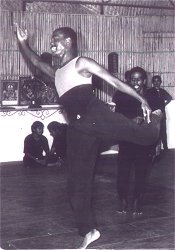 In the USA, he has performed with the Murray Louis Project, Martha Graham Ensemble, Carolyn Dorfman Dance Company, Humphrey Weidman Tradition and toured nationally and internationally with the Battery Dance Company. He was also a member of the Alexander's Musical Theatre Touring Company of Pajama Game, Guys and Dolls and Fiddler on the Roof from 1986 - 1990. 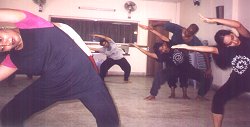
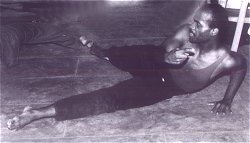 Freeman has also been a student of Bharatanatyam since 1995, studying both in New York and Chennai under Kamala Cesar and Nandini Ramani in the style of T Balasaraswati. You first came to India in 1995 as part of the Purush team. Since then you have returned to India every year to do workshops. What pulls you back every time? I have returned to India because I feel that artists here want to learn our contemporary dance. Many dancers in India were looking for an alternative dance form other than the classical Indian dance. At that point was the time I decided to stay on and return to give fundamental class in the modern vocabulary as well as classes in choreography and learning repertory. Since I am also learning Bharatanatyam, I can, as we say, "Kill two birds with one stone". 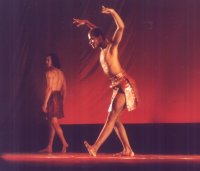 You have conducted workshops in major Indian cities of Bangalore, Chennai, Calcutta, Delhi and in Kerala. Where did you find the most professional approach? To tell you the truth, in every city, I have found serious and gifted, professional dancers, but in Bangalore where my first workshop began way back in 1997, I had a great handful of senior dancers. These dancers were already working with groups, which utilized the modern dance vocabulary, so they were like a 'sponge' in class for knowledge. I also found them to be focused and ready for what was about to come. I must say, if the students in Bangalore weren't serious, I don't think I would still be teaching in India. It was a great start. You predominantly teach movements from the Lester Horton technique in your workshop classes. Why? In a video of Mr.Horton's legacy, he stated that "his technique was suitable for the tropical climate. The hot weather is great for the muscles as they are ready to be worked". His technique is designed to get no limitation to the dancers' usage of the body. It focuses on the back and abdominal muscles. He felt once these two parts were strong, all is possible from the limbs. The center of the body, the stomach which we call the divine center, if it's in complete control, you are free. This technique has such beauty and integrity, once a dancer has mastered the stretches, he or she would be able to work well with any modern dance company or assist them in whatever form they are studying. In each city, a particular organization / dance school arranges for you to conduct workshops for them. Apart from its own members, when the workshop is open to outsiders too, dancers or non - dancers, how has the response been? I have found in the past five years since conducting these workshops, different things. Many of the participants didn't have any idea of what American modern dance was. Most thought it was a social dance or club dancing. After taking the workshop, they saw that it was nothing like what they thought. Many find it tough, the technical exercise, but enjoy the choreography and movement. Many say, " This modern dance is great". Most students can't put into words what they are feeling but when they are in class or on stage for the first time, I can read in their faces and bodies, what they feel. "Movement never lies". Don't you think more classical dancers should make time to participate in such workshops? If they did, how would they benefit? I can't say they should take the class, if one is not interested there is no need to be there. I do feel since I also study Bharatanatyam, dancers need to preserve their bodies. One way to do this is treat it with exercise, which keeps it strong. Indian classical dancers don't warm up. Injury is less likely to happen when the body is prepared. Some of our exercises would be helpful for the Indian dancer. During my workshops, I come across many dancers who realize some of the exercises are of good use. Indian classical dancers should give it a try if they want to preserve their body. You are also a student of Bharatanatyam. What made you choose this particular style and whom to learn from? Bharatanatyam was the first form of Indian dance I set my eyes on. At the time I saw Bharatanatyam, it was like magic, I knew this was what I wanted to study. I first saw Keertik Nair who was then 16, in 1995. He inspired me to study with his beautiful and sensitive dancing. Anita (Ratnam) told me to study with Kamala Cesar in New York and I did just that. Kamalaji is a disciple of Balasaraswati. In 1999, Kamala told me to go to Nandini Ramani in Chennai. This was a burst of light for me, what a gifted dancer and teacher she is. 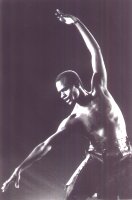 It's amazing that one of our basic positions, which we call plie, is the araimandi position in Bharatanatyam. In western dance it's about kinetic energy, about floor work, partnering, it's about the individual and the individual in relation to the group. Bharatanatyam isn't about space, it doesn't cover all three levels - the low, the medium and the jump, the high. I do feel the movement range in modern dance is total full usage. Bharatanatyam is a lot like ballet in terms of its narrow path or restriction in range. Bharatanatyam is only about the individual or atleast that was what was intended. For how may years have you been learning Bharatanatyam? What difficulties have you encountered in learning something in a language you are not familiar with? I have been studying Bharatanatyam since 1995 during the Purush USA tour. The story telling aspect of Bharatanatyam is the hallmark of the form which means the music and poetry are important. Not knowing Tamil, Sanskrit or Telugu does play a difficult role in my studies. I believe, if there is love for the art, then language doesn't prevent one from learning. The skill of the teacher is important, if he or she can bring out the essence of the poetic text to the student or dancer and the dancer can process and deliver. Then there is art. As I am learning an item, I've always wished that I knew exactly what the meaning was first hand, but as I learn items, I begin to build up a vocabulary of words, which turn up in many of the varnams, padams and shabdams. You divide time between your hometown of NY and traveling to India & Srilanka. How do you mange your own Freeman Repertory Company since you are away from nearly April to September? My Freeman Dance Company is what we call a pick up company, which comes together for projects but doesn't rehearse if there aren't any programs. If I am away, then the dancers will be free to do other projects, as this is what they are doing even while working with me. In the fall of 2001, we will begin rehearsals for a program in early 2002. I do look forward to this reunion. Do you find any difference in discipline in dance classes in India and in the US? You are constantly telling us to stop chatting...!! Our classes are our place to gain all of our resources. One doesn't come to class to socialize, as our classes are also too expensive to waste any time. I do find that the dancers here use class and rehearsals to catch up on gossip. It's not the place or time. So much information is being missed. As Martha Graham once said, a dancer's life is the life of a realist; he has so little time to be born to the instant, meaning our career is so short and precious, things have to be taken care of in the here and now. Dancers, I hope they learn from my workshops how to conduct themselves in class and rehearsals. Many participants thank me for that experience, as they know I will demand it from them. Do you have any cherished moments of your Indian / Srilankan experiences? I feel the most cherished moments are with close friends I have come across both in India and Srilanka. What true and sincere friendship. I do have good, dear friends in the USA but the friendship here is with such warmth and family like. I do also cherish all of my interactions with the local artistes. Whoever thought I would be in India doing this!! I sure wouldn't have believed anyone who would have told me this some fifteen years back! Jaan R Freeman Artistic Director- Freeman Repertory Dance Company 118 Avenue D, New York NY 10009 Ph: (646) - 654 -1080 e-mail: rep_jaan@hotmail.com |